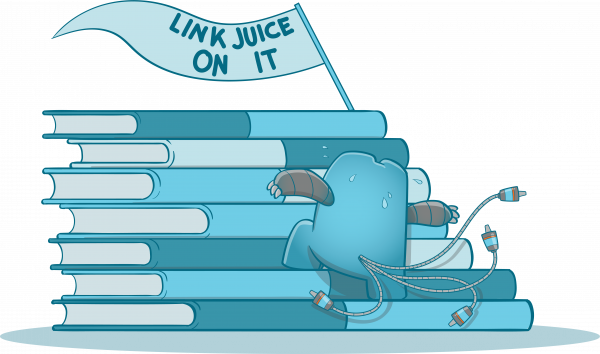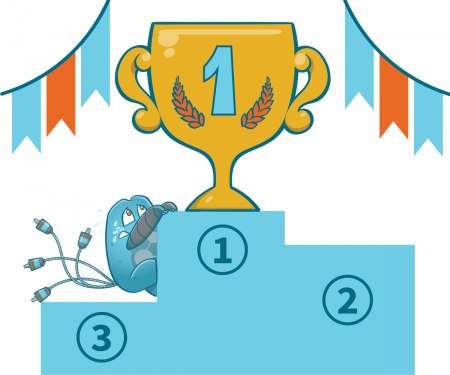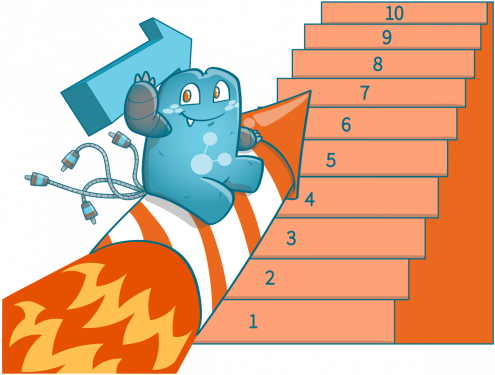What Is Link Juice: Overview For Aspiring Great SEO Specialists

What is link juice? How does it work? What are links, and how do they work? These are only some of the common questions that people ask when people are talking about internal linking.
Every website you visit on the internet consists of different internal and external links. The main difference between these two types of links is that internal links connect pages and posts within your website while external links connect your pages to other websites on the web.
This article will discuss how internal linking works, how they affect SEO, and what link juice really is.

What is Link Juice?
There are a lot of terms on the web that common people won’t immediately understand, and one of them is “link juice.” Also known as link equity, is actually a ranking factor used in the industry of Search Engine Optimization (SEO) that reflects the amount of authority that a backlink delivers to the website it connects with.
Suppose a website with high authority and relevance on a topic provides a backlink to your site. This means that there is a high possibility that the backlink will generate more link juice and help your page rank higher on a search engine results page (SERP). A backlink is a term used in SEO that refers to incoming links from another website or webpage. If another site links to one of your web pages, then you have a backlink from them.
However, having a ton of backlinks doesn’t mean that your website would immediately rank higher. You’d have to pick backlinks with high authority and relevance to your site to ensure that your link juice would increase. Note that link juice is just one piece of the puzzle, and there are other important ranking factors that you should consider when calculating your page’s rank.
Link Juice and PageRank
Google, along with other search engines, consider links that pass “juice” as one of the signals in determining a page’s ranking in the SERPs. That is why a lot of people associate link juice with PageRank. PageRank was the first algorithmic calculation used by Google to rank a site, and it was mainly based on a website’s backlink profile.
To easily understand the concept of link juice in relation to PageRank, it can be explained as to how a site passes its page ranking power to another through the use of links. So if a very authoritative website links to a smaller site’s article or page, then one can interpret it as an endorsement for the smaller site, passing an amount of authority through the following link.
In recent years, however, Google has added many ranking factors. That is why PageRank is no longer the primary determinant for a website’s ranking, so be sure to check out other SEO principles like internal linking strategies to ensure that your page will rank higher.
Determining Link Juice
Internal and external links have the ability to pass SEO juice. But it is good to note that not all links pass the same amount on it. So, here are some important considerations when determining whether a link in your website will pass link juice:
Relevance of the Link
Whenever you’re linking to a page, ensure that both pages are related. This is really important since Google will know. Remember, links that are not relevant may not provide much value or authority to your site.
Authoritativeness of the Linking Site
When picking links, you should try to look for trusted web pages with a high degree of authority since links from these types of sites tend to transfer more link juice as compared to relatively new websites that have just started building their brand.
Is the Link Followed?
When crawlers encounter no-followed links, they are signaled to ignore them. This means that they won’t have link juice. However, it doesn’t necessarily mean that no-followed links don’t have other value for your site.
Is the Link Crawlable?
There are instances when a page will block crawlers through the robots.txt file. Once this happens, the crawler is told to ignore it, and the link won’t pass any SEO juice.
Location of the Link
Be mindful of where you place your links on the webpage. If a link is buried down in the footer of the page, then most probably, it won’t get as much value as the link embedded in the body of your page’s content.
When structuring your site, you should always keep in mind that great architecture will highly benefit your page. You should look at it logically by picking what content is most beneficial to your visitors and how your links help them accomplish their goals.
Number of Links in the Page
Choosing the page that will link to your site is also crucial in determining the value of a link. Imagine there are hundreds of links on a site, and one of them is your page. Would a visitor find the link to your site easily? The answer is no, so picking an authoritative page with only a few clicks should be your top priority.
There are actually no rules about how many links should be on a page. What you can do is look for high-value pages that are relevant to your site.
How Does Link Juice Work?
Link juice helps increase your rank factor and, at the same time, is one of the top-ranking signals. Once link juice flows to a page, it can spread throughout your website by using the concept of internal linking.
When link juice is transferred to one of your high-ranking pages, you can spread it to other pages on your website to help increase their rank as well. There are several linking techniques you can use, but the most common is through internal linking. Here are some of the optimal places where you can place your internal links:
- Internal links:
- on the body of the text
- in the sidebar
- in the navigation
- as a source or a “view next.”
Sculpting Link Juice
When sculpting link juice, a website owner strategically segregates links into two categories: followed and no-followed. By using this technique, the owner can control the flow of juice from page to page.
Link juice sculpting works since you pass down the link juice from your top-ranking pages to the weaker posts on your website to increase their ranking. Through this strategy, you get to spend less on backlinks since internal links power your pages. Plus, sculpting link juice greatly enhances crawl efficiency since Google’s bots will not crawl low-value pages.
Sculpting link juice is somewhat a double-edged sword for site owners since, if done incorrectly, it might not give you the result you were looking for. So, if you’re not an expert in sculpting link juice, it is best to focus on developing a good web architecture and implementing other ranking strategies.

How Pages Get More Link Juice
To get more link juice, you’d need to find external links (hyperlinks or backlinks) to your website. Here are some methods that can help you gain more backlinks:
- Create authoritative content and aim to be a top site for information on a topic.
- Set your site or content as a resource.
- Write blog posts for other websites under your industry.
- Make partnerships or groups with site owners under your niche.
- Aim to get quoted on other websites through marketing efforts.
- Ensure that your content is valuable and trustworthy.
- Focus on improving your brand; make it popular.
- Implement good marketing techniques.
- Promote good website content and make sure that it gets to the right audience.
Maximizing Your Link Juice
Using a Good Anchor Text for a Backlink
When it comes to anchor text for backlinks, you need to ensure that your anchor texts are of good quality. Below is a checklist of how an anchor text should be:
- Natural
- Relative
- Short
- Adds value to the user
Link Juice Manipulation
Link juice manipulation is often misunderstood as mainly negative. However, there are two types of link juice manipulation: Good Link Juice Manipulation and Bad Link Juice Manipulation. If appropriately used, link equity manipulation can benefit both your SEO and the user’s experience.
To give you an overview, link manipulation is the process of leveraging link juice to improve the ranking signals of other pages on your website.
Good Link Juice Manipulation
This manipulation technique means that you have to connect your site so that bots and users will easily understand. Once you notice that there is a particular page on your website that has many links coming in, you can safely leverage that webpage to enhance the rankings of other pages.
You can do this by finding pages on your site that have a lot of link juice and including internal links in that page to other important pages on your website. Always ensure that what you are linking from the top-ranking page should be relevant to it. Else, Google will know that you’re simply manipulating the link juice.
You can also create an internal link map that groups the pages on your site in a logical way.
Bad Link Juice Manipulation
This link juice manipulation technique is when a site owner links out to other sites in an unnatural way for the sole purpose of enhancing the site’s authority or site relevance.
The most common way to do this is by making do-follow links to affiliate products or services that the site owner is paid to promote and unnatural links to other sites.
Rank Higher with Link Juice
Even though link juice doesn’t directly convert people to buy goods, the more your website has it, the more it will be considered by Google as authoritative. With higher link juice, your website may get a higher rank in SERPs, thus increasing the chances of users clicking your website’s link.
If you’re wondering how websites are getting enough link juice, or you still need clarifications on what is link juice, you can visit Internal Link Juicer today to talk to one of our agents.






